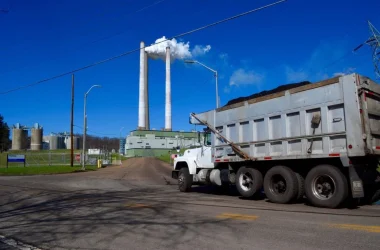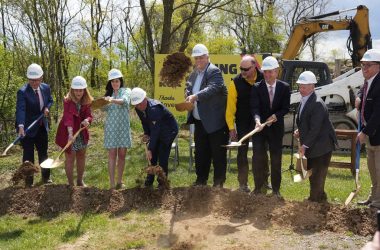Editor’s note: The following is the first part in a series tackling the heroin epidemic sweeping the nation, state and Eastern Panhandle. Part one focuses upon the heroin epidemic itself and the questions local residents have regarding how the problem will come to an end.
By JEFF McCOY
The Journal
MARTINSBURG, W.Va. — Local residents are watching an invading army move into their neighbors. It’s not tanks, jeeps and soldiers, but something smaller, something that can’t even be seen at first glance. It’s a drug that is easy to transport and hide, readily available and killing people daily.

(Photo by Jeff McCoy)
“He-Man,” “Little Boy,” “Smack,” “Dope” — it has many names. For most people outside the drug trade, it’s simply known as heroin. Something that will put you in a complete painless state, make you feel good and also kill without warning.
Martinsburg is a small town and looks like a great place to raise a family, or retire. Nestled into the mountains of scenic West Virginia, it is close enough to Baltimore and Washington, D.C. that working in one of those higher paying cities is a real option. Lower taxes and home costs have opened the road to many new people moving into the area.
Older residents know, however, that even in a small town major drug crimes can happen. They remember “The Hill,” and the large federal drug raid that occurred in the 1980s. That raid was so large that multiple state police agencies participated, and everyone from street dealer to kingpin was rounded up and arrested. Some were deported while others went to prison. The townspeople thought the problem would never happen again.
“What happened to our town,” he asks as he scares a prostitute back across the street.
His frustration is felt by many business owners and residents. Almost everyone has been impacted by the epidemic, one way or another. Someone in the family is using, a friend or loved one has died, or their property has been stolen for an addict to fund his or her addiction for the next hit.
It’s a national problem for sure, but West Virginia is above the national average and Berkeley County is above the state average. Everyone has an idea of whose at fault. Many have answers but only a few are working to correct the problem.
According to the Centers for Disease Control and Prevention, heroin use more than doubled among young adults aged 18 to 25 in the last decade. More than 9 in 10 people who used heroin also used at least one other drug. Roughly 45 percent of people who used heroin were also addicted to prescription opioid painkillers.
Arrest for drug passion is left to “officer’s discretion,” and some senior law enforcement officials are discourage when an arrest is made but the suspect is released with a minor fine and no jail time.
In Back Creek Valley, where it is an open secret of the location of drug houses, landlords watch in frustration as their property becomes busier than a fast food drive-thru 24 hours a day. They move for an eviction, but the property is reclaimed for drug dealers as soon as the next renter takes up residence.
It can all become very taxing on law enforcement, jails and the fire departments. Berkeley County Emergency Ambulance Authority will handle more than 9,000 calls this year alone. Many of those are heroin related. In some cases, a patient will refuse medical care after Narcan has been administered and the ambulance will be called back to that location within 24 hours.
So far this year there have been 461 overdoses and 62 deaths in Berkeley County. Many crimes committed are drug related. Sen. John Unger, D-16th District, has seen the problem across the state.
“I stayed in Richwood, which is a little town that got devastated in Nicholas County. At night it was like the dawn of the dead. These druggies would come out and they just walked the streets and looked for anything they could get to sell to get their fix. It’s the lack of hope. It’s what they call ‘Appalachia Fatalism,’” Unger said.
Residents in Inwood have complained about the same thing. After dark people walk from car to car pulling the door handle to see if it is unlocked. If it is, they take anything they can carry.
Where does it come from? How does it get here? How is this much heroin transported without detection? Why is there not always a jail penalty and mandatory rehab? These are the questions which have been asked, and the ones this series will attempt to answer.
See more from The Journal





